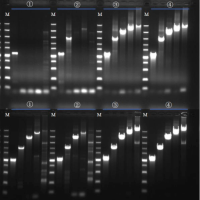RNase R, Poly (A) Polymerase, etc used in the research are provided by Tinzyme.

Nature Biotechnology
https://doi.org/10.1038/s41587-024-02204-4
https://www.nature.com/articles/s41587-024-02204-4
Si-Kun Guo, Chu-Xiao Liu, Yi-Feng Xu, Xiao Wang, Fang Nan, Youkui Huang, Siqi Li, Shan Nan, Ling Li, Edo Kon, Chen Li, Meng-Yuan Wei, Rina Su, Jia Wei, Shiguang Peng, Nitay Ad-El, Jiaquan Liu, Dan Peer, Ting Chen, Li Yang & Ling-Ling Chen
Abstract
Efforts to advance RNA aptamers as a new therapeutic modality have been limited by their susceptibility to degradation and immunogenicity. In a previous study, we demonstrated synthesized short double-stranded region-containing circular RNAs (ds-cRNAs) with minimal immunogenicity targeted to dsRNA-activated protein kinase R (PKR). Here we test the therapeutic potential of ds-cRNAs in a mouse model of imiquimod-induced psoriasis. We find that genetic supplementation of ds-cRNAs leads to inhibition of PKR, resulting in alleviation of downstream interferon-α and dsRNA signals and attenuation of psoriasis phenotypes. Delivery of ds-cRNAs by lipid nanoparticles to the spleen attenuates PKR activity in examined splenocytes, resulting in reduced epidermal thickness. These findings suggest that ds-cRNAs represent a promising approach to mitigate excessive PKR activation for therapeutic purposes.
Ling-Ling Chen
Key Laboratory of RNA Innovation, Science and Engineering, CAS Center for Excellence in Molecular Cell Science, Shanghai Institute of Biochemistry and Cell Biology, University of Chinese Academy of Sciences, Chinese Academy of Sciences, Shanghai, China
School of Life Science and Technology, ShanghaiTech University, Shanghai, China
New Cornerstone Science Laboratory, Shenzhen, China
Key Laboratory of Systems Health Science of Zhejiang Province, School of Life Science, Hangzhou Institute for Advanced Study, University of Chinese Academy of Sciences, Hangzhou, China


